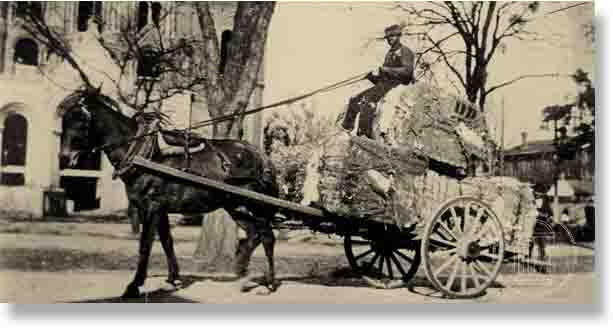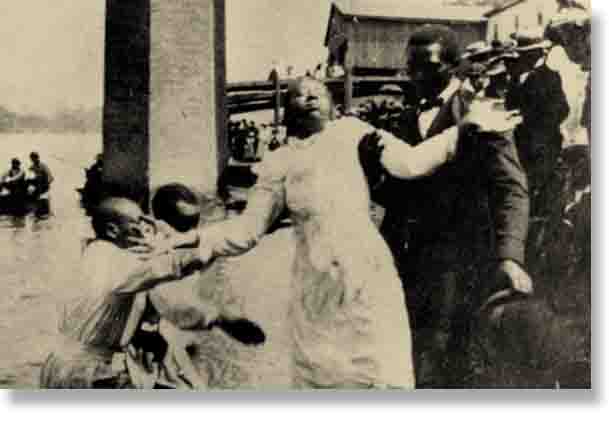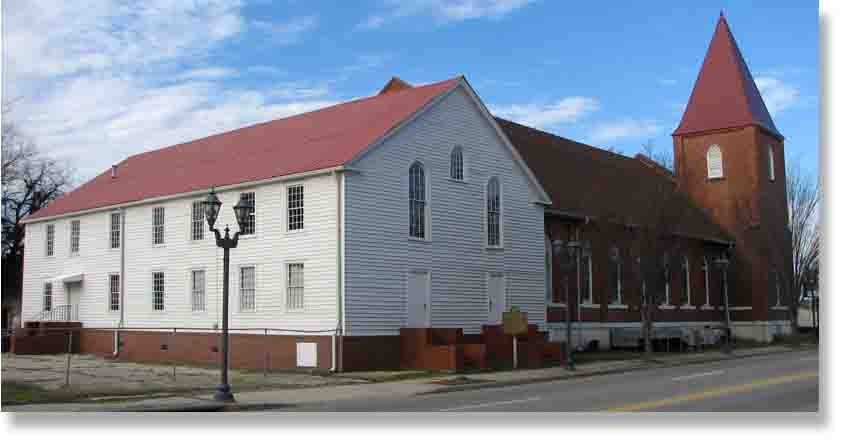 |
|||||
 |
|||||
HISTORY OF SPRINGFIELD
FREE AFRICAN AMERICANS IN THE OLD SOUTH
SPRINGFIELD: BEGINNINGS TO CIVIL WAR
CIVIL WAR, RECONSTRUCTION, AND THE NEW SOUTH
SPRINGFIELD BAPTIST AND AFRICAN AMERICAN EDUCATION
Drayman Hauling a Load of Cotton, Late Nineteenth Century. Work opportunities for African American men after the warwere similar to thosebefore the war, though a decline inriver commerce removed an important source of jobs for them. Also, they were often barred from skilled trades and industrial jobs except for the most menial and unskilled. Working as draymen, teamsters, and performing menial labor were the most common options available to them (Source: Williams Photographic Collection, Hargrett Rare Book & Manuscript Library, University of Georgia).
African Americans could enter skilled trades and professions to provide services to their own community (Source: Augusta Museum of History).
Baptism ceremony in the Savannah River at the Thirteenth Street Bridge, Late Nineteenth Century. Religion and related institutions provided focus, integration, and identity to Augusta’s African American community (Source: Williams Photographic Collection, Hargrett Rare Book & Manuscript Library, University of Georgia). |
CIVIL WAR, RECONSTRUCTION, AND THE NEW SOUTH The war brought further changes to the community, the most obvious and dramatic being the end of slavery. Abolition altered the legal status of thousands of local residents and increased the size of the free African American population. As both the African American and European-American communities oriented themselves to new circumstances, the Springfield Baptist Church became a social and political center. The Georgia Equal Rights Association was organized here in 1866. Led by Captain James Emory Bryant, formerly the Federal Army’s agent for the Freedman’s Bureau, the organization became a supporter of the state’s Republican Party, voicing its positions through the Loyal Georgian, which Bryant published. The Republicans lost the city, county, and state in the 1870 elections, causing local African Americans to shift their attention to other areas. The war's end meant that African Americans who had lived on the plantation were now free, but they had no land or resources as well as no experience with freedom. Many ended up as tenant farmers on former plantations, a lifeway that was not much different than slavery. The members of the Springfield Community would have been helpful in providing guidance on jobs, places to live, and life in the cities. The African American community also began developing various social institutions in the post-war era, particularly benevolent societies. These were anchored in the church and helped provide assistance to elderly and indigent community residents. The Springfield neighborhood began to decline in size and importance to the African American community in the late 1870s. In 1878, the Augusta Baptist Institute (later Morehouse College), founded by the Springfield Baptist Church, decided to relocate to Atlanta. By this time, Atlanta had emerged as a significant center of African American life and started drawing in African Americans from other parts of the south. Yet the growth of the Terry, on the south side of Augusta, bled population from Springfield with its opportunities to acquire land more cheaply. Further, growing segregationist attitudes drove people away. The neighborhood had become absorbed into Augusta by this time and segments of the European-American community began pushing out, or at least decreasing, Springfield’s African American population. Springfield Baptist Church at Twelfth and Reynolds Streets. During the twentieth century, even as social, economic, and political concerns moved elsewhere, the Springfield Baptist Church remained a spiritual center of the community. The church was first housed in a frame structure built in 1801 for St. John’s Methodist Church. In 1902, the congregation built a new brick church and moved the older wooden building to the rear. Constructing a new church building at a time of economic and social pressure attested to the strength and resiliency of the Springfield community. The building continues to serve the community, providing not only a place for worship, but also a physical landmark of the rich history of African American Augusta (Photo by Terri Gillett, New South Associates, Inc.).
|



